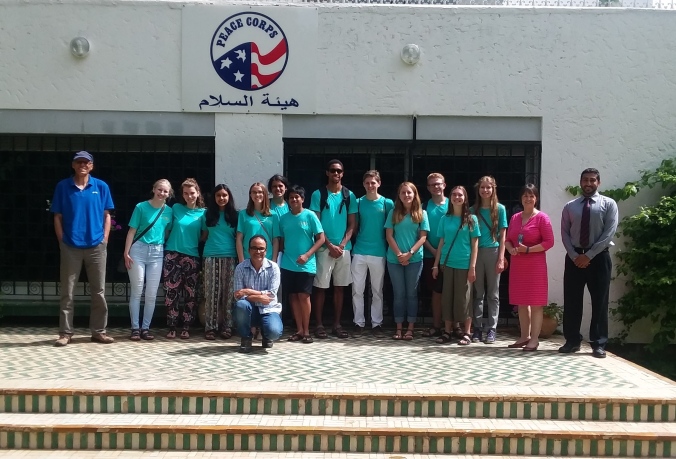Our time in Morocco has been majestical, especially the last week in Essaouira where I had the amazing opportunity to ride camels, barter with shopkeepers, and most importantly, spend time with our Arabic speaking partners. The week started off with wishing farewell to our homestay families and meeting students from the Marrakech group in Essaouira. In Essaouira, there is a multitude of places where one can find camels, especially along the beach. Our group bartered with the camel herder for a better price to ride the camels. Riding the camels along the sea with the harsh wind on our backs was amazing and a once in a lifetime experience. Their fur was extremely soft and they almost purred in satisfaction when we petted them. I am glad that I was able to ride a camel in Morocco since I had never ridden a camel before in my life.
The Medina of Essaouira (formerly “Mogador“) is a UNESCO World Heritage listed city, an example of a late 18th-century fortified town. Morocco is often called Africa’s little Hollywood and no city exemplifies this epithet more than Essaouira. Besides being the shooting location for blockbuster films such as Gladiator and Lawrence of Arabia, all the scenes of the city of Astapor in Game of Thrones were shot in the city’s Medina. I had a rendezvous of my own – the Bollywood movie ‘Tiger Zinda Hai‘, featuring superstars Salman Khan and Katrina Kaif was being filmed during our visit, and we had an opportunity to watch the stars in action.
Bartering with the shopkeepers was also an exciting and fun experience because it forced us to speak the Arabic we learned in our school. Since Essouria is famous for its wooden-made products, I bought a chessboard made out of wood and some other wooden products to give as gifts to my family and friends. These experiences were so critical to my Arabic learning experience, because I was actually able to apply my language skills in real-world situations.
Lastly, conversing with our Moroccan partners in Arabic was very helpful because we were able to learn more Arabic and English from each other. In addition, I was able to connect with these Moroccan friends and learn more about their culture and how religion influenced their lives. I shared my opinion about Morocco’s beauty and how the people are extremely nice and hospitable. But, I also pointed to my speaking partners about how sexual harassment seemed to be a real problem in the country. They replied that in order to avoid sexual harassment in Morocco, women wear the hijab and avoid wearing “revealing” clothing. In fact, my speaking partner did not even enjoy wearing the hijab, but only wore it because she did not want to get harassed.
In conclusion, Morocco has been an amazing place where I have been able to not only learn an extensive amount of Arabic, but also get a deep appreciation and understanding for Moroccan culture. I would like to thank everyone from the bottom of my heart for their generosity and hospitality on my trip.
